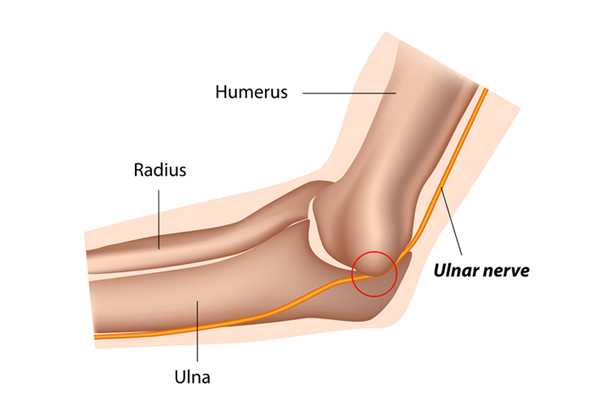Understanding Ulnar Nerve Decompression Surgery London: Relief for Tingling and Weakness
Overview
The ulnar nerve is responsible for the sensation and movement of your hand. When this nerve is pinched, particularly at the elbow, it can result in pain, numbness, and weakness. Surgery for Ulnar nerve can relieve these symptoms and increase hand function.
What is the Ulnar Nerve?
The ulnar nerve runs from your neck, through your arm, and all the way to your hand. It has sensation to your ring and little fingers and some muscles in your hand and forearm that let you perform very precise movements with your hand and allow you to make a tight grip.
What Causes Ulnar Nerve Decompression?
There can be compression of the ulnar nerve at the elbow or the wrist, due to various reasons, including:
- Repetitive motion: Pressure on your elbow from leaning on it too long or frequent bending of the elbow can aggravate the nerve.
- Direct blow: The nerve can be injured from a blow to the inside of the elbow.
- Fluid accumulation: NerveThe Swelling In The Elbow can be responsible for compressing the.
- Medical conditions: Nerve compression can be caused by arthritis or other diseases.
Symptoms of Ulnar Nerve Compression:
- Tingling and Numbness: This affects the ring and little fingers and may be worse at night or when the elbow is bent for long periods.
- Weakness: You might experience difficulty holding onto things, pinching, or moving your fingers in a coordinated manner.
- Muscle wasting: In worse outlook, muscles of the palm could get weak and shrivelled.
- Pain: Aching pain on the inner part of the elbow or into the hand.
Treatment Options
Non-surgical treatments, such as physical therapy, splinting, and medication, are often used first. But if symptoms do not improve or if there is severe nerve damage, surgery might be recommended.
Surgery For Ulnar Nerve Compression:
The aim of this procedure is to decompress the nerve with minimum invasion. The surgeon makes an incision close to the affected area (elbow or wrist) and does the treatment.
- Cubital Tunnel Release (Elbow): The ligament roof of the cubital tunnel is incised, thereby opening the tunnel to create more space for the ulnar nerve.
- Ulnar Nerve Transposition (Elbow): In some cases, the Ulnar nerve is positioned to a safe location.
- Wrist Decompression (Wrist): Releases pressure on the nerve at the wrist.
Recovery:
As a procedure of recovery for Ulnar Nerve Decompression, the patients need to wear a splint for 2 to 6 weeks and then start physical therapy to regain movement and strength. Many patients recover well from surgery however the recovery depends on the severity of the condition and the type of surgery they have undergone.
Surgical Outcomes:
The surgery is usually successful, and most patients notice significant relief from their symptoms. The recovery time for Ulnar Nerve Surgery can be lengthy, and full recovery may not be a given, particularly in really bad injuries where there is permanent nerve damage.
Remember:
If the patient has ongoing numbness, tingling, weakness or pain in their hand or arm, particularly near the elbow, see your GP and discuss the potential causes and treatment options, including ulnar nerve decompression surgery.

